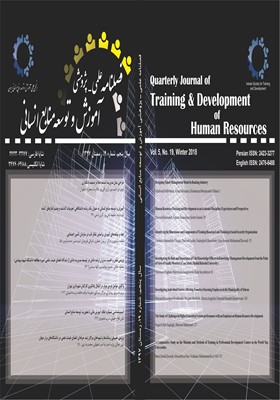Comparison of the Effectiveness and Efficiency of Three Methods: Electronic training, Electronic Performance Support System, and Combination of Electronic Training with Electronic Performance Support System to Improve Employee Performance (Case Study: Employees of Day Insurance Company)
Subject Areas :Marjan Zahedian 1 * , Hashem Fardanesh 2 , Javad Hatami 3 , kiumars taghipour 4
1 -
2 - Tarbiat Modares University
3 - Tarbiat Modares University
4 -
Keywords: Performance improvements, Performance support, Training, Efficiency, Electronic Performance Support System.,
Abstract :
The purpose of the present study was to measure the effectiveness and efficiency of three methods: training, electronic support system, the combination of training and electronic performance support system, for improving performance and increasing employee efficiency. The research method was semi-experimental, and the post-test with the control group was used to measure the performance and efficiency of the staff. The statistical population in this research was 570 insurance agents of the Day insurance company throughout the country. Among them, 60 insurance agents were selected by cluster sampling method and randomly divided into three groups: "Electronic training," "Electronic Performance Support System" And "Combination of electronic training and electronic performance support system.” A questionnaire was designed with the help of subject specialists to measure the actual performance of the participants. Content validity was used to determine the validity of the questionnaire, and the reliability of the sculptors (correlation coefficient was 0.79) was used to assess the reliability of the questionnaire. To measure the efficiency (amount of time spent completing the job task), the arrival time of the insurance agents to the Electronic Performance Support System and the moment of their departure from this environment is estimated. The collected data were analyzed using multivariate analysis of variance and post hoc tests. The results of the data analysis showed that the insurance agents who participated in the "Combination of Electronic training and the Electronic Performance Support System" group had better performance compared to the insurance agents in the other two groups, and they did their job activity in a shorter time.

